
Helen Frankenthaler was an American abstract expressionist painter. She was a major contributor to the history of postwar American painting. Having exhibited her work for over six decades, she spanned several generations of abstract painters while continuing to produce vital and ever-changing new work. Frankenthaler began exhibiting her large-scale abstract expressionist paintings in contemporary museums and galleries in the early 1950s. She was included in the 1964 Post-Painterly Abstraction exhibition curated by Clement Greenberg that introduced a newer generation of abstract painting that came to be known as color field. Born in Manhattan, she was influenced by Greenberg, Hans Hofmann, and Jackson Pollock's paintings. Her work has been the subject of several retrospective exhibitions, including a 1989 retrospective at the Museum of Modern Art in New York City, and been exhibited worldwide since the 1950s. In 2001, she was awarded the National Medal of Arts.

Fairfield Porter was an American painter and art critic. He was the fourth of five children of James Porter, an architect, and Ruth Furness Porter, a poet from a literary family. He was the brother of photographer Eliot Porter and the brother-in-law of federal Reclamation Commissioner Michael W. Straus.
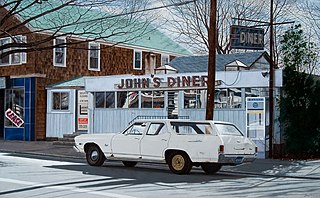
Photorealism is a genre of art that encompasses painting, drawing and other graphic media, in which an artist studies a photograph and then attempts to reproduce the image as realistically as possible in another medium. Although the term can be used broadly to describe artworks in many different media, it is also used to refer specifically to a group of paintings and painters of the American art movement that began in the late 1960s and early 1970s.

Adolph Friedrich Reinhardt was an abstract painter active in New York for more than three decades. He was a member of the American Abstract Artists (AAA) and part of the movement centered on the Betty Parsons Gallery that became known as abstract expressionism. He was also a member of The Club, the meeting place for the New York School abstract expressionist artists during the 1940s and 1950s. He wrote and lectured extensively on art and was a major influence on conceptual art, minimal art and monochrome painting. Most famous for his "black" or "ultimate" paintings, he claimed to be painting the "last paintings" that anyone can paint. He believed in a philosophy of art he called Art-as-Art and used his writing and satirical cartoons to advocate for abstract art and against what he described as "the disreputable practices of artists-as-artists".

Seymour Chwast is an American graphic designer, illustrator, and type designer.
Paul Jenkins was an American abstract expressionist painter.
John Elderfield was Chief Curator of Painting and Sculpture at the Museum of Modern Art, New York, from 2003 to 2008. He served as the Allen R. Adler, Class of 1967, Distinguished Curator at the Princeton University Art Museum and Lecturer in the Princeton University Department of Art and Archaeology from 2012 to 2019.

Peter Hill Beard was an American artist, photographer, diarist, and writer who lived and worked in New York City, Montauk and Kenya. His photographs of Africa, African animals and the journals that often integrated his photographs, have been widely shown and published since the 1960s.
Wolf Kahn was a German-born American painter.

George Rodrigue was an American artist who in the late 1960s began painting Louisiana landscapes, followed soon after by outdoor family gatherings and southwest Louisiana 19th-century and early 20th-century genre scenes. His paintings often include moss-clad oak trees, which are common to an area of French Louisiana known as Acadiana. In the mid-1990s Rodrigue's Blue Dog paintings, based on a Cajun legend called Loup-garou, catapulted him to worldwide fame.
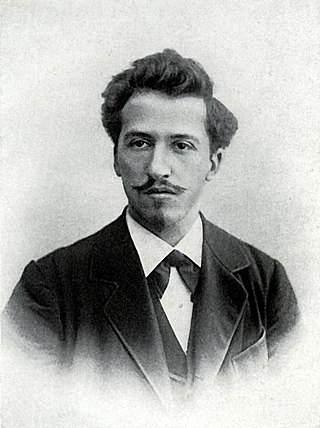
Pieter Cornelis Mondriaan, after 1906 known as Piet Mondrian, was a Dutch painter and art theoretician who is regarded as one of the greatest artists of the 20th century. He is known for being one of the pioneers of 20th-century abstract art, as he changed his artistic direction from figurative painting to an increasingly abstract style, until he reached a point where his artistic vocabulary was reduced to simple geometric elements.
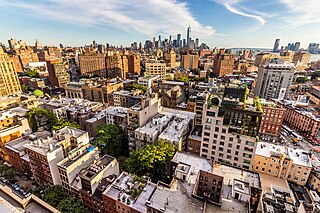
The 9th Street Art Exhibition of Paintings and Sculpture is the official title artist Franz Kline hand-lettered onto the poster he designed for the Ninth Street Show. Now considered historic, the artist-led exhibition marked the formal debut of Abstract Expressionism, and the first American art movement with international influence. The School of Paris, long the headquarters of the global art market, typically launched new movements, so there was both financial and cultural fall-out when all the excitement was suddenly emanating from New York. The postwar New York avant-garde, artists like Willem de Kooning and Jackson Pollock, would soon become "art stars," commanding large sums and international attention. The Ninth Street Show marked their "stepping-out," and that of nearly 75 other artists, including Harry Jackson, Helen Frankenthaler, Michael Goldberg, Joan Mitchell, Grace Hartigan, Robert De Niro Sr., John Ferren, Philip Guston, Elaine de Kooning, Lee Krasner, Franz Kline, Ad Reinhardt, David Smith, Milton Resnick, Joop Sanders, Robert Motherwell, Barnett Newman, and many others who were then mostly unknown to an art establishment that ignored experimental art without a ready market.
Thomas Leo Blackwell was an American hyperrealist of the original first generation of Photorealists, represented by Louis K. Meisel Gallery. Blackwell is one of the Photorealists most associated with the style. He produced a significant body of work based on the motorcycle, as well as other vehicles including airplanes. In the 1980s, he also began to produce a body of work focused on storefront windows, replete with reflections and mannequins. By 2012, Blackwell had produced 153 Photorealist works.
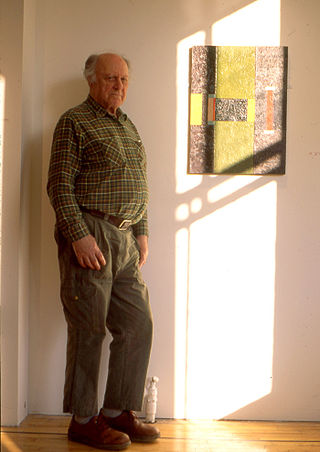
Roy Newell (1914-2006) was an American abstract painter.
Ingrid Schaffner is a curator, writer, and educator specializing in contemporary art since the mid-1980s. Schaffner work often coalesces around themes of archiving and collecting, photography, feminism, and alternate modernisms—especially Surrealism. She has curated important exhibitions that have helped studio craft to gain acceptance as fine arts, such as Dirt on Delight: Impulses That Form Clay with Jenelle Porter at the Institute of Contemporary Art, Philadelphia in 2009.
William T. Williams is an American painter and educator. He is known for his process-based approach to painting that engages motifs drawn from personal memory and cultural narrative to create non-referential, abstract compositions. He was a Professor of Art at Brooklyn College, City University of New York from 1971 to 2008.
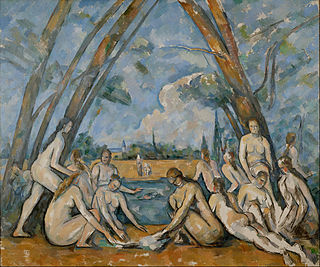
The Bathers is an oil painting by French artist Paul Cézanne first exhibited in 1906. The painting, which is exhibited in the Philadelphia Museum of Art, is the largest of a series of Bather paintings by Cézanne; the others are in the Museum of Modern Art in New York City, National Gallery, London, the Barnes Foundation, Pennsylvania, and the Art Institute of Chicago. Occasionally referred to as the Big Bathers or Large Bathers to distinguish it from the smaller works, the painting is considered one of the masterpieces of modern art, and is often considered Cézanne's finest work.
Irving Sandler was an American art critic, art historian, and educator. He provided numerous first hand accounts of American art, beginning with abstract expressionism in the 1950s. He also managed the Tanager Gallery downtown and co-ordinated the New York Artists Club of the New York School from 1955 to its demise in 1962 as well as documenting numerous conversations at the Cedar Street Tavern and other art venues. Al Held named him, "Our Boswell of the New York scene," and Frank O'Hara immortalized him as the "balayeur des artistes" because of Sandler's constant presence and habit of taking notes at art world events. Sandler saw himself as an impartial observer of this period, as opposed to polemical advocates such as Clement Greenberg and Harold Rosenberg.

Look Mickey is a 1961 oil on canvas painting by Roy Lichtenstein. Widely regarded as the bridge between his abstract expressionism and pop art works, it is notable for its ironic humor and aesthetic value as well as being the first example of the artist's employment of Ben-Day dots, speech balloons and comic imagery as a source for a painting. The painting was bequeathed to the Washington, D.C., National Gallery of Art upon Lichtenstein's death.

Big Painting No. 6 is a 1965 oil and Magna on canvas painting by Roy Lichtenstein. Measuring 235 cm × 330 cm, it is part of the Brushstrokes series of artworks that includes several paintings and sculptures whose subject is the actions made with a house-painter's brush. It set a record auction price for a painting by a living American artist when it sold for $75,000 in 1970. The painting is in the Kunstsammlung Nordrhein-Westfalen collection.













